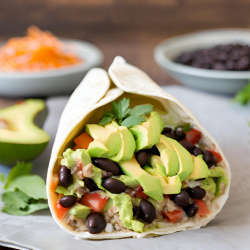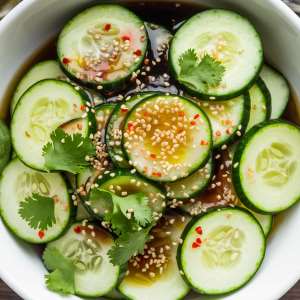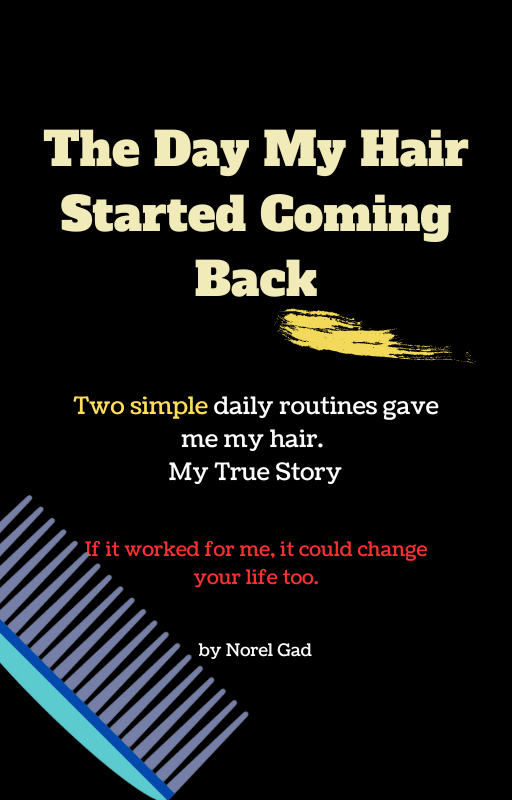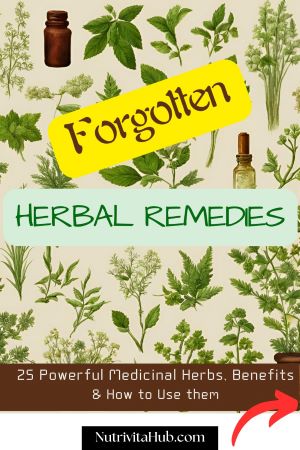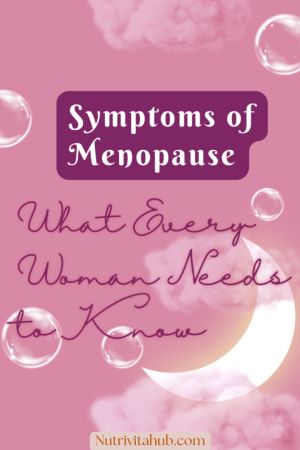How Often Should You Massage Your Scalp for Hair Growth?
How often should you massage your scalp for hair growth? The answer could make all the difference in your hair care journey. Regular scalp massages help improve blood circulation, reduce stress, and stimulate hair follicles—all of which contribute to healthier, fuller hair.
Whether you’re doing it daily for a few minutes or twice a week with essential oils, finding the right frequency can support visible growth over time. Let’s explore how often to massage your scalp for optimal hair growth and how to do it right.
Taking care of your hair often involves looking beyond just the products you apply. One effective and enjoyable method is scalp massage. But how often should you massage your scalp for optimal hair growth? Understanding this can help you maximize the benefits of your efforts.
First, let’s explore what happens when you massage your scalp. This practice increases blood circulation to your hair follicles, promoting hair growth. When blood flow is boosted, more nutrients and oxygen reach the follicles, which may result in healthier, fuller hair. Additionally, massaging your scalp can help reduce stress, a known factor that can inhibit hair growth.
Many experts recommend doing scalp massages at least a few times a week to see significant benefits. Different people may respond differently, but here are some general guidelines:
- 1-2 minutes daily: If you’re short on time, even a quick daily massage can be beneficial. This can help promote circulation and maintain scalp health.
- 3-5 minutes every other day: Extending your sessions to a few minutes every other day can enhance blood flow and create a relaxing routine.
- 10-15 minutes twice a week: Dedicating some longer sessions a couple of times a week offers deeper relaxation and benefits. Use essential oils or hair care products for added nourishment.
Choosing the right time is also crucial. You can massage your scalp while watching TV, in the shower, or even during your skincare routine. Make it a pleasurable experience rather than a chore!
To get the most out of your scalp massages, consider these techniques:
- Use your fingertips: Apply gentle pressure with your fingertips instead of your nails to avoid irritation.
- Work in circular motions: Move your fingers in small, circular motions across the scalp to stimulate blood flow.
- Focus on key areas: Pay attention to areas that feel tight or sore, as these can be spots of tension.
Essential oils can also enhance your scalp massage experience. Some oils, like rosemary or peppermint, are known to promote hair growth and provide a pleasant scent. Mix a few drops with a carrier oil, like coconut or jojoba oil, for added benefits.
Always listen to your scalp. If you feel any discomfort, adjust your technique or frequency. Not all techniques are suitable for everyone, so find what works best for you. If you notice any irritation or adverse effects, it may be wise to reduce the frequency of your massages or consult with a professional.
Consistency is key. Hair growth takes time, and regular scalp massages will help you establish a routine that fits into your lifestyle. Whether you’re looking to improve thickness, increase growth rates, or just relax, a consistent approach will yield better results.
Remember, the journey to healthier hair also involves other factors such as a balanced diet, sufficient hydration, and proper hair care practices. Your scalp health is closely tied to your overall wellness, so take care to nurture your entire body.
To enhance your routine, consider integrating scalp massage with your other hair care practices. Using nourishing shampoos and conditioners, reducing heat styling, and maintaining a healthy diet all contribute to hair vitality. Every small step you take compounds over time.
How often you should massage your scalp for hair growth largely depends on your schedule and preferences. However, making it a habitual practice can have lasting effects. It’s not just about frequency; it’s about creating a nourishing environment for your hair to grow. Start slow, enjoy the process, and watch your hair flourish!

How often to massage scalp for hair growth
The Benefits of Scalp Massage for Overall Hair Health
Scalp massage is an age-old technique used not only for relaxation but also for enhancing hair health. You might wonder, how exactly does massaging your scalp benefit your hair? Let’s dive into its advantages and discover how incorporating this simple practice into your routine can elevate your hair care regimen.
One of the most immediate benefits of scalp massage is improved blood circulation. When you massage your scalp, you encourage blood flow to the hair follicles. Increased blood circulation brings more oxygen and essential nutrients to these follicles, which can contribute to stronger and healthier hair growth. The more nourished your hair follicles are, the better your hair will grow!
Another significant advantage is the reduction of stress. Stress is a well-known factor that can hinder hair growth and even lead to hair loss. Engaging in regular scalp massage helps to release tension and stimulate relaxation. The soothing effects can help to lower cortisol levels in your body, which, in turn, supports healthier hair. Imagine taking ten minutes after a long day to treat yourself to a relaxing massage that not only feels good but promotes your hair’s vitality!
Additionally, scalp massages can help to distribute natural oils produced by your scalp evenly throughout your hair. These oils are essential for moisturizing and protecting your hair strands. If you often experience dryness or dullness, regular massages can help revive your hair’s natural shine and luster. You may find that your hair feels softer and looks healthier after incorporating this practice.
- Boosts Hair Growth: By increasing blood flow, you also stimulate hair follicles, leading to rapid hair growth.
- Reduces Dandruff: Gentle scalp massages can help remove flakiness and keep the scalp clean, reducing the incidence of dandruff.
- Promotes Relaxation: The calming effects of massage can help lower stress levels, making it an excellent addition to your self-care routine.
- Enhances Product Absorption: When you apply hair products after a scalp massage, they may penetrate deeper, maximizing their effectiveness.
So, you might be asking, “How often should I massage my scalp for hair growth?” Ideally, aim to engage in this soothing practice at least two to three times a week. Consistency is key when it comes to reaping the benefits of scalp massage. You can allocate about 10 to 15 minutes to each session. Whether you do this while showering, watching TV, or as part of your skincare routine, make it a relaxing ritual.
To ensure you’re maximizing the benefits of your scalp massage, consider using your fingertips rather than your nails. This will help you avoid irritation and discomfort. You might also want to use oils known for their hair-boosting properties, such as coconut oil, castor oil, or even essential oils like rosemary and peppermint. These oils not only help in hydrating your scalp but also add an aromatic touch to your massage. Just remember to avoid overdoing it; a small amount goes a long way!
If you’re experiencing specific issues such as hair thinning or alopecia, consulting with a dermatology professional can offer additional insights tailored to your needs. They may advise you on personalized treatment options alongside regular scalp massaging.
Implementing scalp massage into your hair care routine is a simple yet effective way to promote the overall health of your hair. Beyond aiding hair growth, it represents a moment of self-care that can significantly impact your well-being. So, take the time to pamper yourself with a gentle, revitalizing scalp massage and witness the delightful results in your hair health.
If you’re looking for real inspiration and a simple routine that actually works, don’t miss The Day My Hair Started Coming Back—a personal journey that proves consistent scalp care can truly transform your hair.
Techniques for Effective Scalp Massaging
Massaging your scalp can be a powerful technique for promoting hair growth and improving overall scalp health. There are several methods you can try to ensure your scalp massages are effective and enjoyable. Each technique targets blood circulation, tension relief, and relaxation, contributing to healthier hair. Here are some methods you can incorporate into your routine:
Basic Massage Techniques
The simplest form of scalp massage is to use your fingertips to apply gentle pressure on your scalp. Here are steps to follow for a basic massage:
- Start at the Front: Place your fingers on your forehead and slowly move them down towards the nape of your neck.
- Use Circular Motions: With your fingertips, create small circular motions. This can help increase blood circulation.
- Knead Gently: Use your fingers to knead sections of your scalp. This technique helps relieve tension.
- Vary Pressure: Adjust the pressure as needed. Some areas might require a lighter touch, while others can withstand a firmer press.
Oils
Using oils during your scalp massage can enhance the benefits significantly. Here’s how to do it:
- Choose the Right Oil: Oils like coconut, olive, or jojoba can nourish your scalp and hair.
- Warm the Oil: Gently warm the oil before applying it. This makes it more effective and soothing.
- Apply in Sections: Divide your scalp into sections, applying the oil directly to each area as you massage.
- Communicate with Your Scalp: As you massage, take note of any areas that feel particularly tense and spend a bit more time on those spots.
Technique Variations
Not all scalp massages are the same, and you can vary your approach based on what feels good for you:
- Finger Tapping: Instead of rubbing, try tapping your fingertips lightly on your scalp. This can stimulate hair follicles without causing friction.
- Edge Rubbing: Use your fingertips to rub along the edges of your scalp, where you may notice more tension.
- Pinching: Gently pinch small sections of your scalp. This can help increase circulation while also providing a different sensation.
Using Tools
Consider using tools designed for scalp massages to add an extra level of benefit:
- Scalp Massagers: Handheld massagers that you can move across your scalp are ideal for relaxing tension.
- Brushes: A soft-bristle brush can not only help with oil application but also stimulate the scalp effectively.
- Electric Massagers: Some tools are battery-operated and provide a more vigorous massage. Just make sure not to overuse them.
Frequency and Duration
To experience the full benefits of scalp massages, consistency is key. Aim to massage your scalp:
- Frequency: At least 3-4 times a week is ideal for noticeable results.
- Duration: Spend 5-15 minutes each session, depending on how much time you have available.
Consistency will ensure that blood circulation improves, and the benefits compound over time, leading to healthier hair growth.
Combining Relaxation Techniques
For optimal results, integrate relaxation techniques such as deep breathing or playing soft music during your scalp massage. This will enhance your massage experience and reduce stress, which can negatively impact hair health.
Listening to Your Body
Remember to pay attention to your body’s response during these massages. If any technique causes discomfort, modify the pressure or approach. Every individual’s scalp is different, and what works for one person may not work for another.
These techniques into your routine can significantly impact your hair health. Start today and enjoy the pleasure of a self-care ritual that not only promotes hair growth but also provides so much more for your overall wellness!

How often to massage scalp for hair growth
The Role of Blood Circulation in Hair Growth
When it comes to hair growth, many people overlook the vital role that blood circulation plays. Proper blood flow ensures that the hair follicles receive essential nutrients and oxygen necessary for healthy growth. By understanding how improved circulation impacts hair growth, you can take steps to enhance your hair health effectively.
The hair follicles require a steady supply of blood to thrive. This blood transports crucial elements such as vitamins, minerals, and proteins, which all contribute to the strength and vitality of your hair. Additionally, improved circulation aids in removing waste products from the hair follicles, creating an optimal environment for hair growth.
There are several key ways in which blood circulation affects hair growth:
- Nutrient Delivery: Blood vessels deliver key nutrients like biotin, vitamins A, C, D, and E, as well as zinc and iron, directly to the follicles. These nutrients play a significant role in the growth and maintenance of healthy hair.
- Oxygen Supply: Oxygen is vital for all cellular functions, including hair growth. Adequate blood circulation ensures that hair follicles receive enough oxygen to support various biological processes necessary for healthy hair.
- Waste Removal: Improved circulation helps to remove toxins and waste products from the scalp and hair follicles, preventing buildup that can hinder growth and lead to hair loss.
- Strengthening Hair Roots: A well-nourished and oxygenated environment helps to fortify the hair roots, making them stronger and less prone to breakage and shedding.
So, how can you enhance blood circulation to support your hair growth? Here are some effective tips you can incorporate into your routine:
- Scalp Massages: Regularly massaging your scalp can significantly improve blood flow to the hair follicles. You can use your fingertips to apply gentle pressure in circular motions for about 5-10 minutes daily.
- Exercise Regularly: Engaging in physical activities stimulates circulation throughout the body. Aim for at least 30 minutes of moderate exercise several times a week to boost blood flow, including to your scalp.
- Stay Hydrated: Proper hydration is key to overall circulation. Drinking enough water helps to maintain blood volume and flow, ensuring that your body delivers nutrients effectively for hair growth.
- Balanced Diet: Eating a nutrient-rich diet promotes better circulation. Include foods like fatty fish, nuts, beans, and leafy greens that contain vitamins and minerals essential for healthy hair.
- Hot Oil Treatments: Applying warm oil to your scalp can enhance circulation. Oils like coconut, jojoba, or castor oil not only nourish your hair but also promote blood flow when massaged in.
Additionally, it is essential to manage stress levels as high stress can constrict blood vessels, impeding circulation. Practices like meditation, yoga, or deep-breathing exercises can help reduce stress and promote a healthy flow of blood throughout your body.
Regularly stimulating your scalp not only fosters better blood circulation but also provides a moment of relaxation and self-care, which can be very beneficial for your mental health as well. Combining these techniques with patience and consistency will yield the best results in enhancing hair growth and maintaining a healthy scalp.
It is important to note, however, that while improving blood circulation is fundamental to hair growth, multiple factors like genetics, health conditions, and age also play a significant role. If you’re experiencing significant hair loss or other concerns, consulting a healthcare professional may provide valuable insights specific to your situation.
Simple lifestyle changes and essential daily practices to enhance your blood circulation can lead to healthier hair growth over time. Be proactive about these strategies, and you may notice positive changes in the condition and appearance of your hair.
Incorporating Essential Oils into Your Scalp Massage Routine
Scalp massages can greatly enhance hair growth and overall scalp health. When you incorporate essential oils into your scalp massage routine, you can further amplify these benefits. Essential oils not only provide pleasant fragrances but also offer numerous therapeutic properties. Let’s explore how you can effectively incorporate essential oils into your hair care routine for the best results.
To start, it’s important to choose the right essential oils based on your specific hair needs. Here’s a list of some popular essential oils that are effective for scalp health:
- Lavender oil: Known for its calming effects, lavender oil can stimulate hair growth while also reducing stress.
- Rosemary oil: This oil improves circulation to the scalp, which can promote hair thickness and growth.
- Peppermint oil: The cooling sensation of peppermint oil may invigorate the scalp and promote hair follicle rejuvenation.
- Tea tree oil: With its antifungal and antibacterial properties, tea tree oil helps keep the scalp clean and healthy.
- Chamomile oil: Known for its soothing properties, chamomile oil can also impart shine and brightness to your hair.
Once you’ve selected your essential oils, it’s essential to blend them with a carrier oil to avoid skin irritation. Common carrier oils include coconut oil, jojoba oil, and olive oil. Here’s a simple recipe for an effective scalp massage oil:
- 2 tablespoons of carrier oil (like coconut or jojoba oil)
- 5 drops of chosen essential oil (like rosemary or lavender)
- Mix well in a small bowl or bottle.
This blend will not only nourish your scalp but also enhance the aromatic experience of your massage. Next, follow these steps to perform a proper scalp massage:
- Warm the oil: Slightly warm the oil mixture in your hands. This step can enhance absorption.
- Apply the oil: Use your fingertips to apply the oil evenly across your scalp.
- Massage gently: With circular motions, massage the scalp for 5 to 10 minutes. Start at the front and work your way back.
- Focus on problem areas: If you have thinning spots or any tension, spend additional time massaging these areas.
- Rinse if desired: You can leave the oil on for several hours or overnight. If you wish to rinse it off, use a gentle shampoo.
Essential oils into your scalp massage routine is beneficial, but the frequency of massages also plays a crucial role in hair growth. Regularity is key for effective results. Aim to massage your scalp at least 2 to 3 times a week. This frequency allows for improved circulation, supporting the hair follicles and aiding growth. If you notice any irritation or discomfort, reduce the frequency or check the dilution of your essential oils.
Creating a calm environment can make your scalp massages even more enjoyable. Try to set aside time for these massages during the week. You could even choose to listen to soothing music or use calming scents in your space. This practice not only promotes hair growth but also acts as a stress relief technique, enhancing your overall wellness.
Remember, patience is essential when it comes to hair growth. You may not see immediate results, but with consistent application and care, your hair may become healthier and more vibrant over time. Enhance your mindfulness by focusing on the experience, and soon you’ll find your self-care routine benefiting both your scalp and your overall sense of well-being.
Incorporating essential oils into your scalp massage routine can be a rewarding practice. By selecting the right oils, creating a comfortable environment, and committing to regular massages, you can support your hair growth journey while enjoying the relaxing benefits of essential oils. Make this simple yet effective step part of your hair care regimen and embrace a naturally healthier scalp.

How often to massage scalp for hair growth
Key Takeaway:
Key Takeaway: Maximizing Hair Growth Through Effective Scalp Massage
Scalp massage is a powerful yet often overlooked tool for enhancing hair growth and overall hair health. Understanding the ideal frequency for massaging your scalp is essential for reaping the maximum benefits. Research suggests that dedicating just a few minutes, about 2-3 times per week, to rake your fingers through your scalp can significantly stimulate hair follicles and promote growth. By making scalp massages a routine part of your hair care regimen, you’re not only encouraging hair growth but also boosting the overall health of your hair.
The benefits of scalp massage extend far beyond promoting growth. Regularly massaging your scalp can reduce tension, relieve stress, and fight anxiety, which are often leading contributors to hair thinning and hair loss. With increased blood circulation during your massage, you ensure that essential nutrients reach your hair follicles, fostering a healthier environment for hair growth. This circulation is vital; without it, your hair may struggle to maintain its strength and vitality.
To maximize the effectiveness of your scalp massage, it’s essential to incorporate specific techniques. Use your fingertips instead of your nails to gently knead and knead your scalp in small circular motions. Varying your pressure can also elevate your experience—sometimes opt for a light touch, while other times, apply a firmer pressure to stimulate blood flow further.
For added benefits, consider integrating essential oils into your scalp massage routine. Oils like rosemary, peppermint, and lavender not only have properties that may enhance hair growth but also can provide relaxing aromas that elevate your self-care experience. Mixing a few drops of your chosen essential oil with a carrier oil can enhance the whole process and make your massage more effective.
By committing to regular scalp massages, utilizing effective techniques, and incorporating beneficial oils, you can create a personalized routine that promotes not only hair growth but also overall scalp health. Remember, consistency is key, so make it a point to prioritize this vital aspect of your hair care for sustainable results.
If you’re looking for real inspiration and a simple routine that actually works, don’t miss
How I Naturally Beat Hair Loss at 60
—a personal journey that proves consistent scalp care can truly transform your hair.
Conclusion
Finding the right frequency for scalp massage can greatly enhance your hair growth journey. Regular scalp massages—aiming for two to three times a week—can help stimulate your hair follicles and promote healthier hair overall. This simple yet effective practice not only boosts circulation but also offers myriad benefits, such as reducing stress and tension, which can indirectly impact hair health.
Various techniques into your scalp massage routine can make it even more beneficial. Techniques like circular motions, gentle kneading, and tapping can awaken the scalp and encourage robust blood flow. Remember, the stronger the circulation, the healthier your hair can become.
Adding essential oils to your massage can elevate the experience and provide additional nourishment. For instance, oils like rosemary and lavender are known for their properties that stimulate hair growth. Just a few drops mixed with a carrier oil can transform your routine into a soothing and revitalizing ritual.
With consistent practice, you may start to notice not only improved hair growth but also an overall enhancement in the health of your scalp. Focus on making scalp massages a calming, enjoyable part of your self-care routine. Embrace this valuable practice to nurture your hair from the roots up, setting the groundwork for luscious, vibrant locks. Tailor your routine to what feels best for you, and enjoy the journey towards healthier hair.
